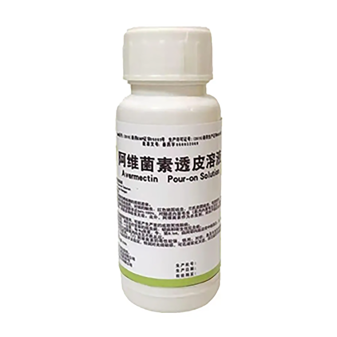- Afrikaans
- Albanian
- Amharic
- Arabic
- Armenian
- Azerbaijani
- Basque
- Belarusian
- Bengali
- Bosnian
- Bulgarian
- Catalan
- Cebuano
- Corsican
- Croatian
- Czech
- Danish
- Dutch
- English
- Esperanto
- Estonian
- Finnish
- French
- Frisian
- Galician
- Georgian
- German
- Greek
- Gujarati
- Haitian Creole
- hausa
- hawaiian
- Hebrew
- Hindi
- Miao
- Hungarian
- Icelandic
- igbo
- Indonesian
- irish
- Italian
- Japanese
- Javanese
- Kannada
- kazakh
- Khmer
- Rwandese
- Korean
- Kurdish
- Kyrgyz
- Lao
- Latin
- Latvian
- Lithuanian
- Luxembourgish
- Macedonian
- Malgashi
- Malay
- Malayalam
- Maltese
- Maori
- Marathi
- Mongolian
- Myanmar
- Nepali
- Norwegian
- Norwegian
- Occitan
- Pashto
- Persian
- Polish
- Portuguese
- Punjabi
- Romanian
- Russian
- Samoan
- Scottish Gaelic
- Serbian
- Sesotho
- Shona
- Sindhi
- Sinhala
- Slovak
- Slovenian
- Somali
- Spanish
- Sundanese
- Swahili
- Swedish
- Tagalog
- Tajik
- Tamil
- Tatar
- Telugu
- Thai
- Turkish
- Turkmen
- Ukrainian
- Urdu
- Uighur
- Uzbek
- Vietnamese
- Welsh
- Bantu
- Yiddish
- Yoruba
- Zulu
10 月 . 11, 2024 12:54 Back to list
gentamicin sulphate
Gentamicin Sulphate An Overview
Gentamicin sulphate is an antibiotic that belongs to the aminoglycoside class of medications, which are widely used to treat a variety of bacterial infections. Derived from the bacterium Micromonospora purpurea, gentamicin was first introduced in the early 1960s and has since become a critical tool in modern medicine. This article discusses its properties, applications, and considerations for use.
Gentamicin works by inhibiting bacterial protein synthesis. It binds to the 30S ribosomal subunit of bacteria, leading to the misreading of mRNA, which prevents the formation of essential proteins necessary for bacterial growth and replication. This mechanism makes gentamicin effective against a wide range of gram-negative bacteria, such as Pseudomonas aeruginosa and Escherichia coli, as well as some gram-positive organisms.
Clinically, gentamicin is often employed in the treatment of serious infections, including septicemia, respiratory tract infections, urinary tract infections, and intra-abdominal infections. It is particularly useful in managing infections in immunocompromised patients and those with complex medical histories. Gentamicin is typically administered intravenously or intramuscularly, depending on the severity of the infection and the patient's condition.
One of the significant advantages of gentamicin sulphate is its rapid action against bacteria. However, the use of this antibiotic is not without risks. Gentamicin is known for its potential nephrotoxic and ototoxic effects. Kidney damage can occur, especially in patients with pre-existing renal impairment or when high doses are administered for an extended period. Ototoxicity, which may result in hearing loss or balance issues, can also occur, particularly with prolonged use or high serum levels.
gentamicin sulphate

To mitigate these adverse effects, healthcare providers closely monitor drug levels in patients receiving gentamicin, adjusting dosages accordingly. Therapeutic drug monitoring is essential to ensure that drug levels remain within a safe and effective range. Additionally, gentamicin is often used in conjunction with other antibiotics to enhance efficacy and reduce resistance.
Another consideration is the development of antibiotic resistance. The overuse and misuse of gentamicin, like other antibiotics, can lead to resistant strains of bacteria, posing significant challenges in treatment. Therefore, physicians are urged to prescribe gentamicin judiciously and only when the clinical situation warrants its use.
In recent years, research has focused on improving the delivery mechanisms and formulations of gentamicin to enhance its therapeutic effects while minimizing side effects. Innovations include liposomal formulations and sustained-release systems that aim to target or release the drug more effectively at the site of infection.
In conclusion, gentamicin sulphate remains a cornerstone in the treatment of serious bacterial infections. While it offers significant benefits in combating infections, careful consideration of its side effects, resistance issues, and appropriate usage is paramount for its continued effectiveness in clinical practice. The ongoing research and development in antibiotic therapies herald hope for an even more efficient use of gentamicin in the future.
-
The Power of Radix Isatidis Extract for Your Health and Wellness
NewsOct.29,2024
-
Neomycin Sulfate Soluble Powder: A Versatile Solution for Pet Health
NewsOct.29,2024
-
Lincomycin Hydrochloride Soluble Powder – The Essential Solution
NewsOct.29,2024
-
Garamycin Gentamicin Sulfate for Effective Infection Control
NewsOct.29,2024
-
Doxycycline Hyclate Soluble Powder: Your Antibiotic Needs
NewsOct.29,2024
-
Tilmicosin Premix: The Ultimate Solution for Poultry Health
NewsOct.29,2024













